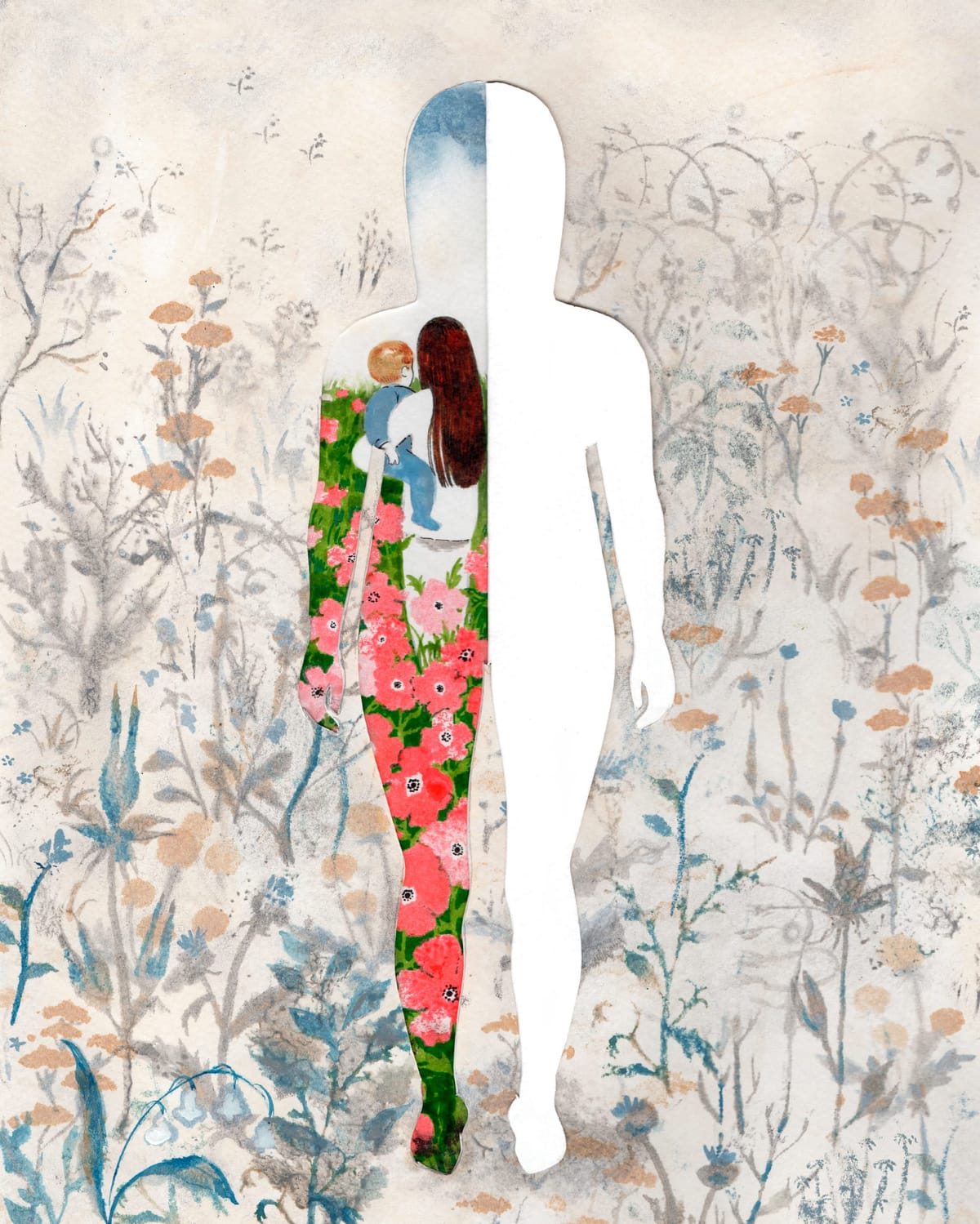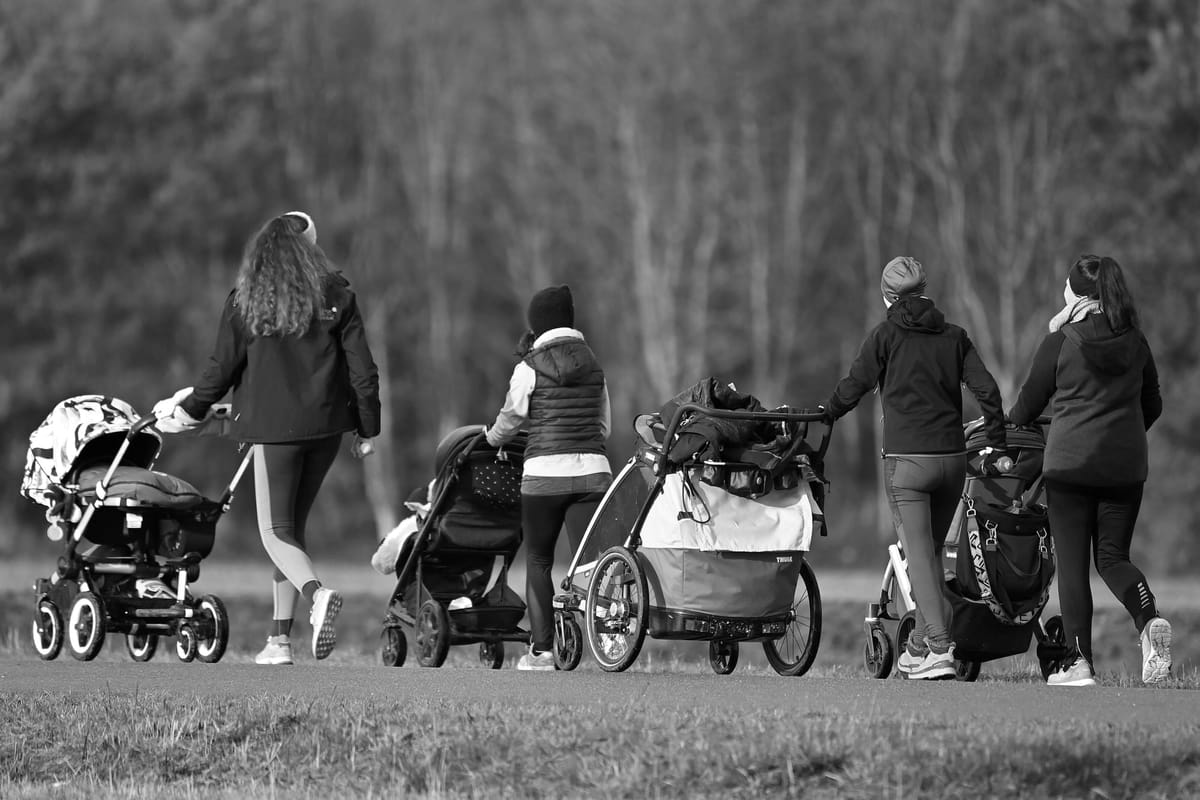It’s So Easy to Blame the Mom
America is funding research to identify the root causes of autism, but it's looking in all the wrong places.

Mother blame. Ugh.
It's hard not to roll my eyes every time the trope comes up. It’s old, it’s tired, it’s overplayed. And it totally works. Women tend to internalize failure. Men externalize it. We have been socialized this way. The self-blame doubles down in motherhood. It's nearly impossible to avoid and it’s easy to exploit.
Case in point: September’s White House press conference, when President Donald Trump took mothers to task for taking Tylenol, drawing an unproven link between that and children developing autism. Of course, it had an effect: Concern spread among pregnant individuals and mothers, causing them to question their every decision around everything they’d ingested during the sensitive days of fetal development. Classic mother blame.
The message these days, particularly from the White House and government majority, is clear: Nothing is more important than your children. Not your personal preferences. Not your comfort. Not your pain. Not your health. And if you can’t step up, well something must be wrong with you and it’s all your fault.
With plenty of holes to poke in the White House press conference—from blaming mothers for autism to the unsubstantiated scientific claims to the use of the term ‘epidemic’ to describe the rise in autism rates—experts and medical professionals were quick to surface what we know and what we don’t.
But one part of the press conference in particular stuck with me: It was the seemingly throwaway comment from Trump that, even in the case of a “dangerous fever,” administering an over-the-counter medication is “ideally a doctor's decision.”
As I sat with that comment, amid the language of epidemics and stoic mothers, I realized the press conference wasn’t about autism. It was about situating blame inside a woman’s body, and leveraging autism to do that. It was about taking control out of the hands of mothers, as if to say, WE will decide what you can and can’t do because you cannot be trusted with your own body. The argument is a mainline for a base that already distrusts the medical establishment—and maligns it.

Seizing on a false narrative
In 2016, Dr. Martine Lappé, an associate professor of sociology at California Polytechnic State University, published a prescient academic paper entitled “The Maternal Body as Environment in Autism Science,” which suggested that even the best-intentioned autism research tends toward reinforcing the narrative that whatever the body is exposed to before and during pregnancy are to blame for the condition—as are the women who, wittingly or unwittingly, let themselves get exposed.
I had been directed to Lappé’s research by the author, Chelsea Conaboy, who has written about how mother blame shows up when it comes to neurodivergence. Conaboy had pointed out, “you can look back again and again through the history of science…and see where a study or finding or an expert's opinion has been seized on because it fits the social narrative…even if that narrative is false.”
The White House press conference took a false narrative and ran with it, despite the fact that not a single study has proven direct causality between acetaminophen use by mothers and autism in their children. Instead, the research cited was subjective and correlational. They were not sitting on a mountain of studies testing causation, they did not have clear proof of any direct link.
But this is the way false narratives happen: when weak research and poor studies are twisted or amplified. Even research and studies that have long been dismissed and disregarded by the scientific community are fair game again.

Follow the money
Doubling down on blaming mothers and raising unnecessary concern about taking common medication during pregnancy, and situating “risk” inside a woman’s body should be worrisome enough. But what followed bothered me even more: the announcement that new research funding—to the tune of $50 million—would be dedicated to identifying “the root causes” of autism, focusing specifically on environmental factors that may cause the condition. Dr. Jay Bhattacharya, the director of the National Institutes of Health (NIH), declared that many of 13 grants awarded, chosen for funding as part of NIH’s Autism Data Science Initiative Research (ADSI), feature “a new science called exposomics.” Exposomics is the study of exposures of an individual across a lifetime and how those exposures relate to health.
On its face, perhaps this doesn’t sound that bad. To be sure, exposomics can be an important line of research if it’s actually studying environmental factors like pollution, poverty, and climate. But my worry is that the focus is not on those things, it’s on the female body—just as Lappé had posited in 2016.
It’s also worth pointing out that the NIH, under this administration, has actually cut funding for autism research, with Nature reporting that the field received $60 million less at the beginning of 2025 when compared with 2024. In short, it’s less funding for fewer areas of research.
Since scientific “discovery” is driven by the studies that get funded—scientists cannot do research without money, after all—reprioritization of grant money can skew the direction of any field. The standard protocol of deploying federal dollars across any research area involves a series of checks and balances that usually keep bias at bay: An extensive review process and a committee convening; advisory groups that include clinicians and members of the community often play a role as well. The general NIH funding cuts for autism research affected the grants that would have followed this level of stringency.
While it is unclear how Dr. Bhattacharya’s projects were ultimately chosen as part of the ADSI, given the timeline—grant announced at the end of May, due in June, awarded in September—the likelihood of a thorough review process is low. Indeed, it is more likely that these awards reflect another side of science: How powerful individuals with specific interests can direct funding towards research that will align with those interests.
Whether the funded studies are robust or not, those who now control the purse strings have shown they are willing to justify shifts in policy based on misinterpreted, incomplete, and (often) bad research. Weeks after the press conference, Robert F. Kennedy Jr. brought up Tylenol, once again, telling Trump and fellow Cabinet members, “Anybody who takes the stuff during pregnancy unless they have to is irresponsible…” But, he added, “It is not proof. We're doing the studies to make the proof.”

The maternal body as the environment
This brings me back to Lappé’s description of the maternal body as environment—“How some ideas about the causes of autism reinforce this really explicit narrative that women’s decisions and even our own biology during pregnancy is to blame for autism.” I worry about what happens when the focus of autism research concentrates around studying “the environment,” the exposome, in the same way maternal Tylenol consumption was singled out as a cause. I worry that the throwaway mention of requiring women to have a doctor’s permission for an over-the-counter medication, which everyone else is permitted to take freely, did not raise more red flags in a country that has already demonstrated a penchant for policy shifts positioning women as needing to be kept under control by others.
As Lappé pointed out to me, “it's not a coincidence that [these latest claims are] coming on the tail of all of these other efforts to limit reproductive rights. It's about limiting choice and challenging people’s trust in medicine and science. I think they are very strategic in aligning all those agendas and positioning themselves as a voice of authority.”
As a scientist myself, I’d be willing to bet that any science that comes from this funding will not go toward ending what the Trump administration called “the autism epidemic”—or an epidemic of any kind. In fact, I think this moment will be remembered as the point in American history when the goal of controlling a woman’s body jumped beyond abortion access restrictions to policing what any woman is permitted, or not permitted to do.
Or…perhaps it won’t: Tuesday’s elections showed big wins for women in the U.S. Maybe history will choose a new direction after all.








